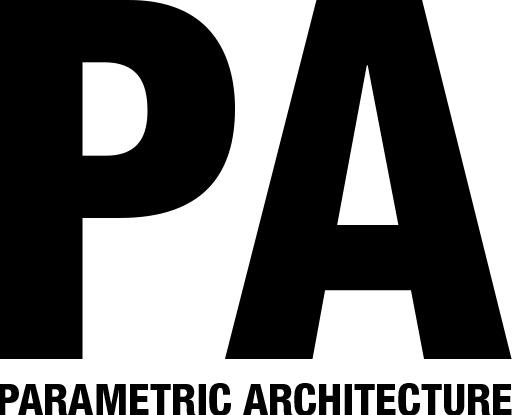
Becoming an architect sure has an allure to it, but which field of study does it actually belong to? Is it a branch of engineering? Is it arts, social sciences, or what? Unlike most concise fields like medicine, where the path is straightforward—you become a nurse, doctor, or surgeon —architecture is multifaceted. An architecture degree blends elements of engineering, arts, and social sciences.
Interestingly, though, it’s somewhat similar to medicine. After earning a general degree (Bachelor of Architecture), you can specialize further, much like how a surgeon focuses on specific areas like kidney stones or heart surgery—only in architecture; this could mean becoming an urban planner or another specialized role.
This guide will help you understand what an architecture degree entails, how to pursue it, and the career opportunities it opens up. But a word of caution: while architecture is as fascinating as it is challenging, it’s not for the faint-hearted.
Introducing the Architectural Degree
Bachelor of Architecture (BArch) is what you need to pursue an architectural degree, specifically one that is accredited by the National Architectural Accrediting Board (NAAB). While it varies from country to country, it generally takes four or five years to complete. Keep in mind that it will take 5 years only if you take full credit every semester and never fail a course, as for some it can possibly span for 6 or 7 years. There’s no shame in that, as it’s very common as well – actually, some ever prefer to take it slow.
Now what will you actually study in this major? Architecture is a multidisciplinary field; think of it like pre-med school, where you get a taste of everything before specializing. Curriculums vary from one university to another, but in general they cover these core studies:

Design Studios:
These courses are very important and have the highest credits, and failing them often sets you back for a year. This is the heart and soul of architectural education, where you get to know all about design thinking, conceptualizing, and creativity to create various designs like buildings or abstract structures.
History and Theory:
The majority disliked history back in school, but it’s not supposed to be the case here. In fact, it’s in these classes where you get to learn about architectural theorists, philosophers, innovators and how the built world came into existence. It gives you an insight on the socio-cultural influences and how deeply rooted in human nature architecture truly is.
Structures and Materials:
Here’s where the engineering side of architecture kicks in, with focused courses on materials, structures, building systems, execution drawings, construction, and more. It gives you a sense of reality to building, and teaches innovative technological approaches in architecture. So, it’s not supposed to shackle your creativity, but rather unleash it.
Environmental Systems:
Sustainability is the main goal of building structures and it has been for a while now. These courses introduce the multifacets of sustainability – Economy,Ecology & Equity – and how to apply them into projects. You also learn about LEED certifications and smart buildings.
Professional Practice:
It’s essential to be aware of the business and practical aspects of architecture, and that’s what courses like project management, ethics, and legal regulations are tailored for. Spoiler alert: this is where you get a kick of reality, not with the structural courses.
Internships:
Most programs require summer internships every year as part of fulfilling the architecture degree. The internships vary with levels, they can start with material fabrication internships up professional office practice. It’s also a very fun aspect if you think about it, and very beneficial as you graduate with some experience on your resume.
Final Year Project:
This is the most exciting and most challenging part of finishing your architectural degree. In a final year project, you get to choose what to do and culminate everything you learned in the previous years into a final product. T usually defines you as an architect and sets out your path and philosophy in the field. This is a project you will always remember, even if no one remembers it.

How To Pursue A Degree In Architecture?
You can apply to any university that has an NAAB accreditation program because it’s usually tailored in a very efficient way. However, if you’re interested in the top-ranking universities with the best architecture programs, here’s a list based on QS World University Rankings:
- The Bartlett School of Architecture (UCL), United Kingdom
- Massachusetts Institute of Technology (MIT), United States
- Delft University of Technology, Netherlands
- ETH Zurich – Swiss Federal Institute of Technology, Switzerland
- Manchester School of Architecture, United Kingdom
- National University of Singapore (NUS), Singapore
- Harvard University, United States
- Politecnico di Milano, Italy
- Tsinghua University, China (Mainland)
- University of California, Berkeley (UCB), United States
- University of Cambridge, United Kingdom
If you’re aiming for an advanced degree in architecture, you can pursue a master’s or even a Ph.D. The duration of a master’s program varies depending on the specialization, typically ranging from 1 to 3 years. This degree allows you to dive deeper into specific aspects of architecture, whether that’s engineering-focused studies, urban planning, theoretical explorations, or other areas of interest.
If research and academia are more your focus, a Ph.D. in architecture offers the chance to make significant contributions to the field through original research. Completing a Ph.D. can take anywhere from 3 to 7 years, depending on your research topic, progress, and other factors.
Is it Mandatory to Have a Higher Degree in Architecture?

This question is open to debate and doesn’t have a one-size-fits-all answer. If we compare architecture to medicine, a medical professional can’t practice without completing the entire 7-9 year journey. In architecture, while further education and specialization are recommended, some of the most brilliant architects have succeeded with just a bachelor’s degree. It ultimately depends on your interests and whether you have the drive to pursue that path.
Interestingly, Tadao Ando, one of the most influential architects in modern and contemporary architecture, never received a formal education. He’s an autodidact, meaning he taught himself. This isn’t to say you shouldn’t get an architecture degree, but it does highlight that the journey in architecture can extend beyond the traditional classroom.
Architecture Degree Career Options
You’d be surprised at the many options you can have with an architectural degree, and this stands as a testimonial to the field’s multidisciplinary aspect. Here’s an extensive list of career options, within two categories:
Directly Linked to the Field of Architecture
- General Architectural Designer
- Residential Architect
- Commercial Architect
- Interior Designer
- Landscape Architect
- Urban Planner
- Restoration/Preservation Architect
- Sustainable/Green Architect
- Project Manager
- Construction Manager
- Building Information Modeling (BIM) Specialist
- Architectural Drafter
- Facade Designer
- Lighting Designer
- Historic Preservation Specialist
- Transportation Planner
- Healthcare Facilities Architect
- Educational Facilities Architect
- Commercial and Retail Architect
- Exhibition/Pavilion Architect
Indirectly Related to the Field of Architecture
- Sustainable Design Consultant
- Industrial/Product Designer
- Furniture Designer
- Graphic Designer
- Fashion Designer
- Video Game Designer
- Set Designer (for TV, Film, Theatre)
- Architectural Photographer
- Professor/Academic
- Writer/Journalist in Architecture
- Real Estate Developer
- Construction Technologist
- Structural Engineer
- Virtual Reality Specialist in Architecture
- Facility Manager
- Architectural Illustrator
- Quantity Surveyor
What about the rumors of Architecture Education?

Pursuing an architecture degree comes with its fair share of challenges, but what about all the rumors: sleepless nights, stress, constant pressure to meet high expectations, self-doubt, etc. You might wonder if it’s true that studying architecture means sacrificing your social life and sanity. Unfortunately, there’s some truth to that. Architecture isn’t just a field of study; it becomes a lifestyle. It’s all around you, and the design process often feels endless.
Unlike fields with clear-cut answers, architecture is more like crafting art with a scientific twist. Your work must solve problems, evoke emotions, and be buildable. But the harsh reality is that sometimes your hard work can feel dismissed by instructors you look up to, leaving you frustrated or questioning your abilities. It sounds intense, and yes, it can be, it actually is. But when you’re passionate about something, you push through the difficulties.
However, it’s not all doom and gloom. If you manage your time well, set boundaries, and maintain self-discipline, you can avoid this dramatic rollercoaster altogether. I had friends who maintained a balanced life, even during jury days, which seemed impossible. Plus, with advancements in technology like AI, AR, and VR, studying architecture has become more accessible and less overwhelming. What used to take an entire semester –or years of on-site experience– to learn can now be understood in just a few hours with interactive tools.
If you’re truly passionate and curious about architecture, this field is for you. But be sure it’s what you want because it demands as much as medicine, only with more creative chaos and no “hero” labels.




















Leave a comment